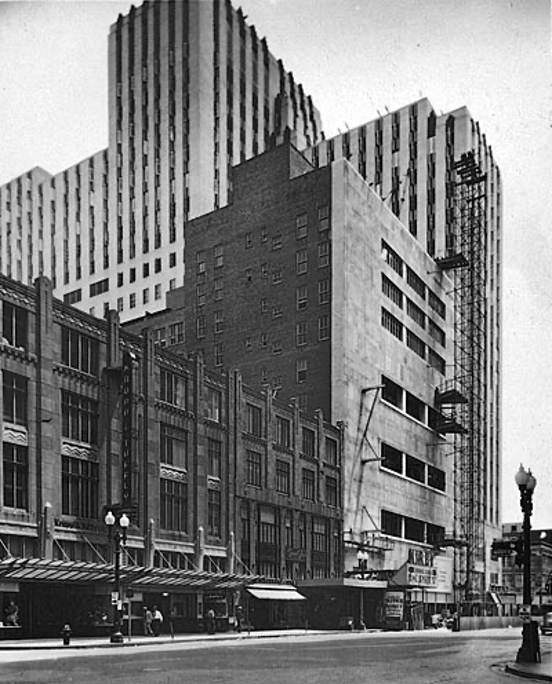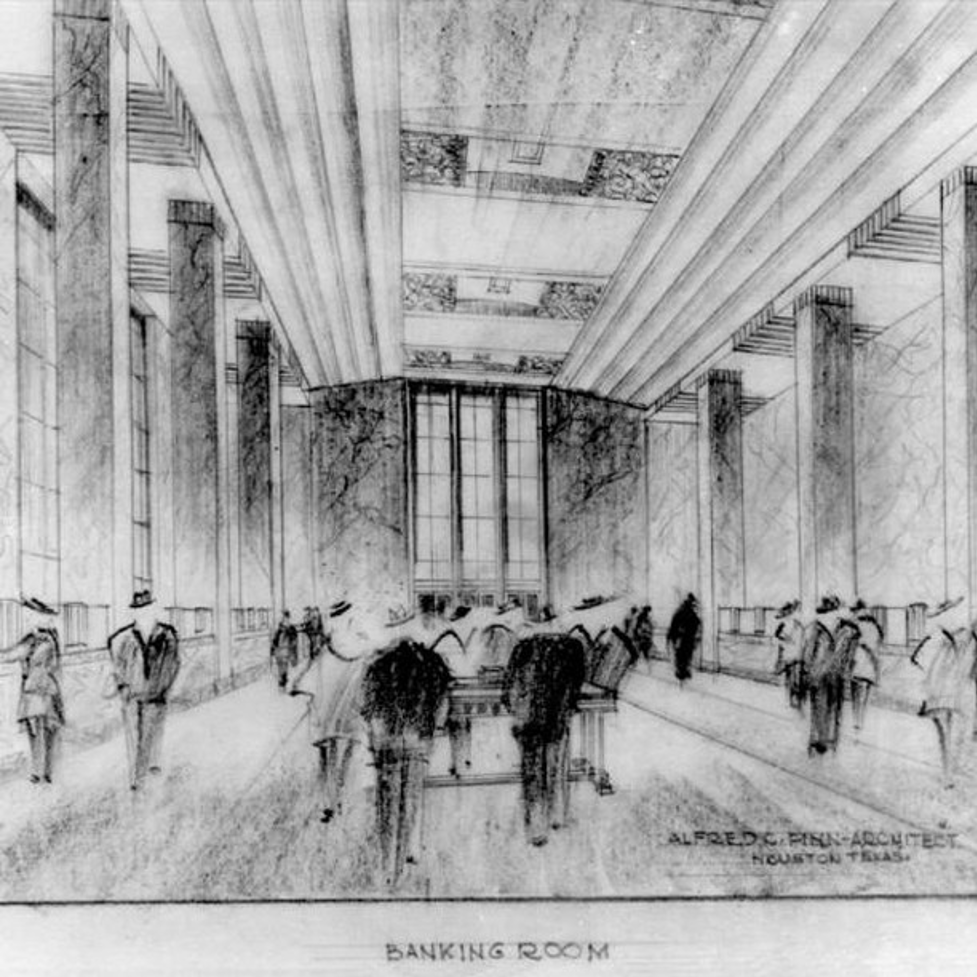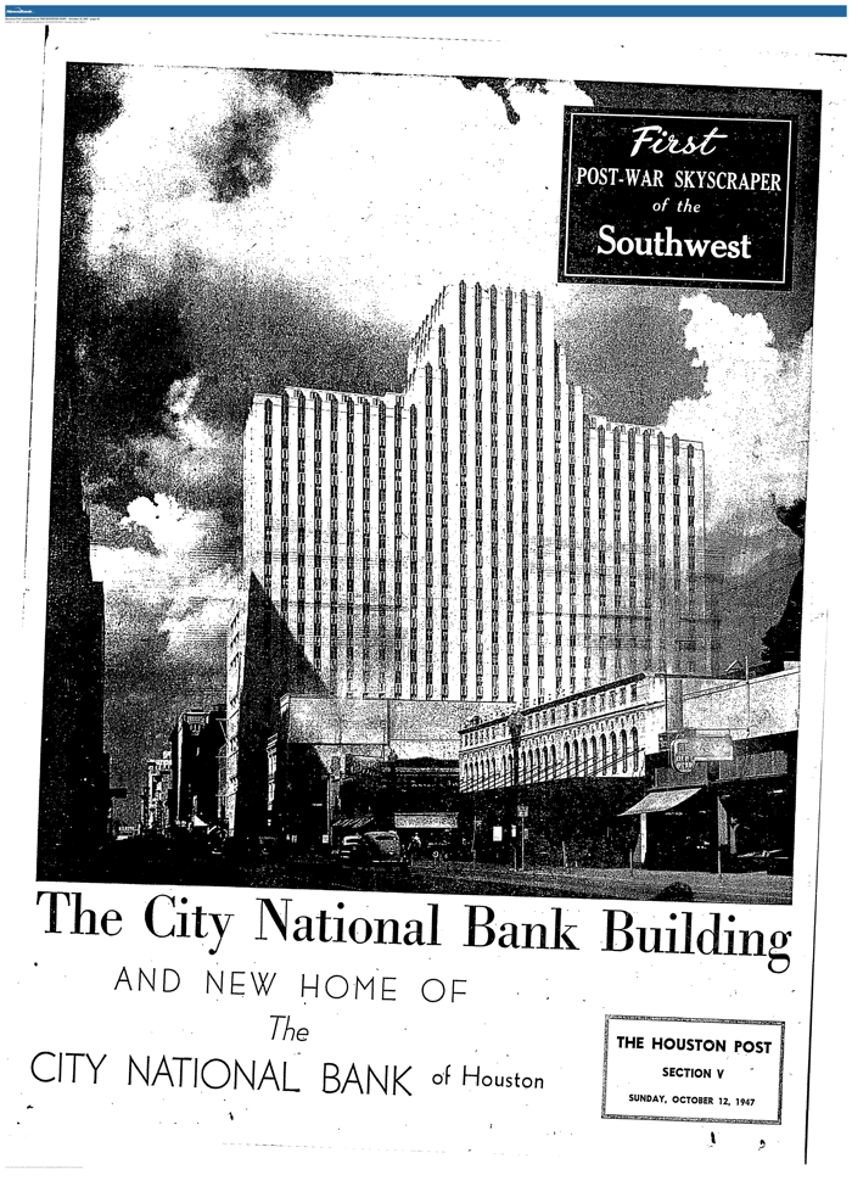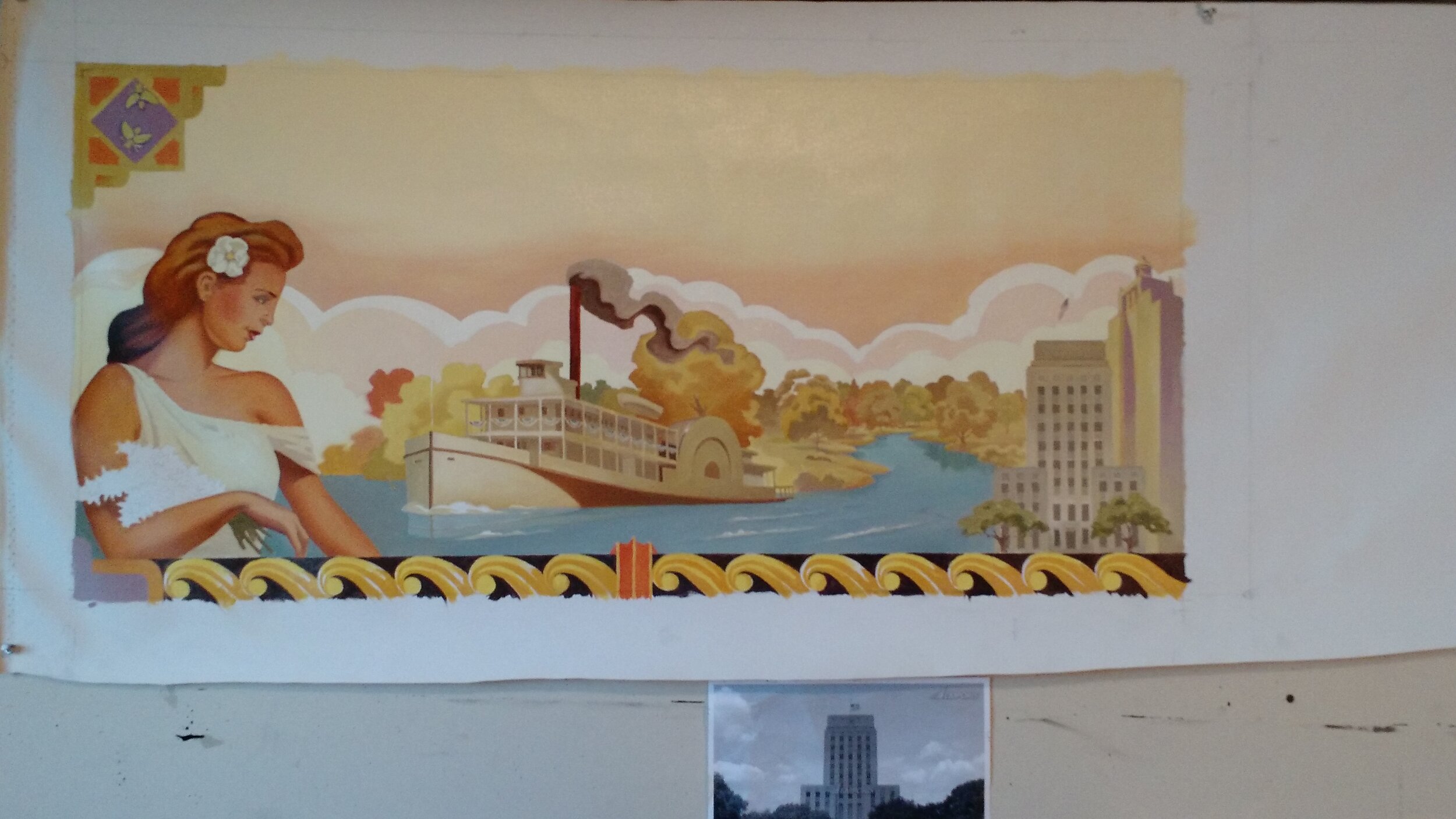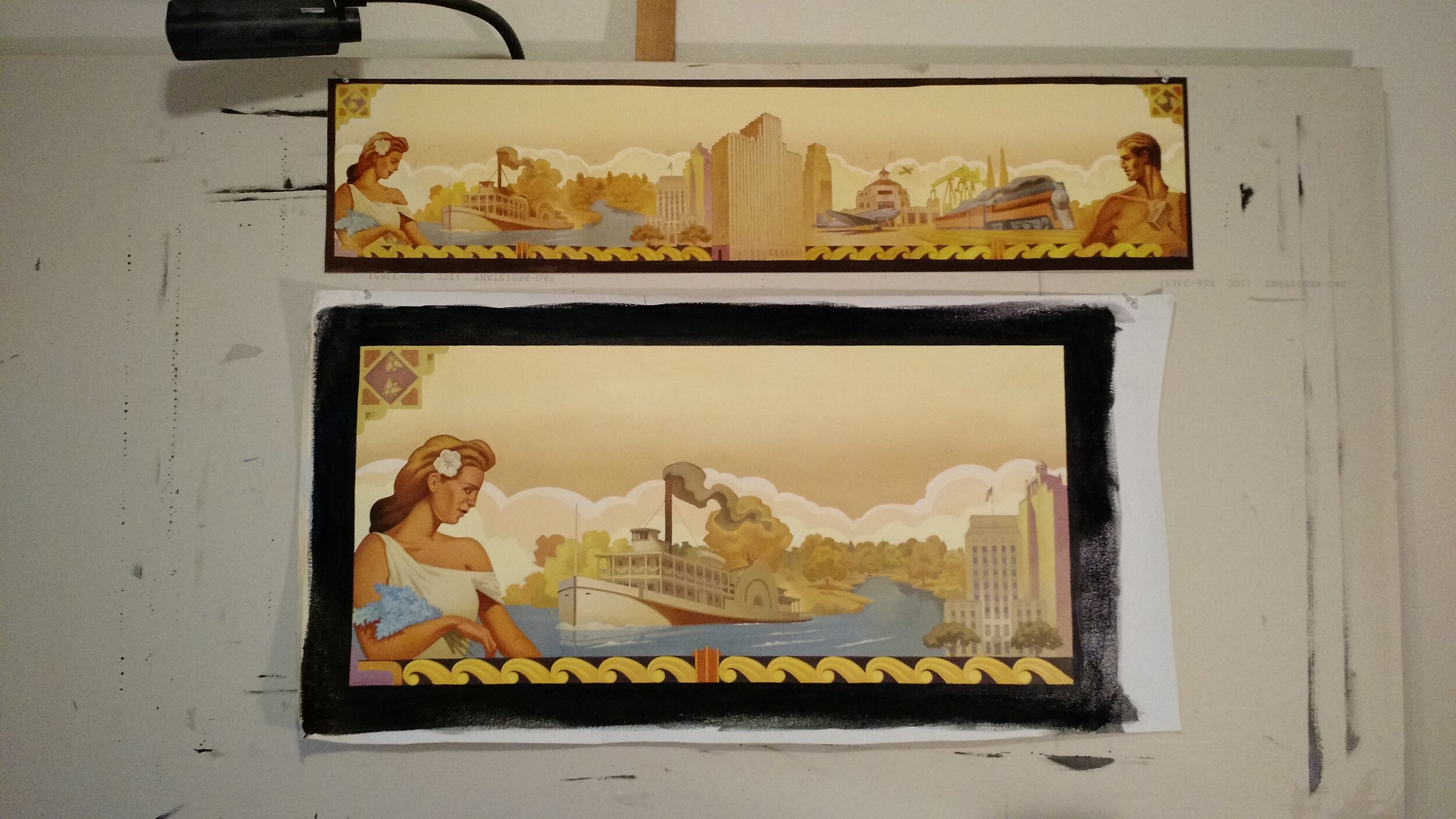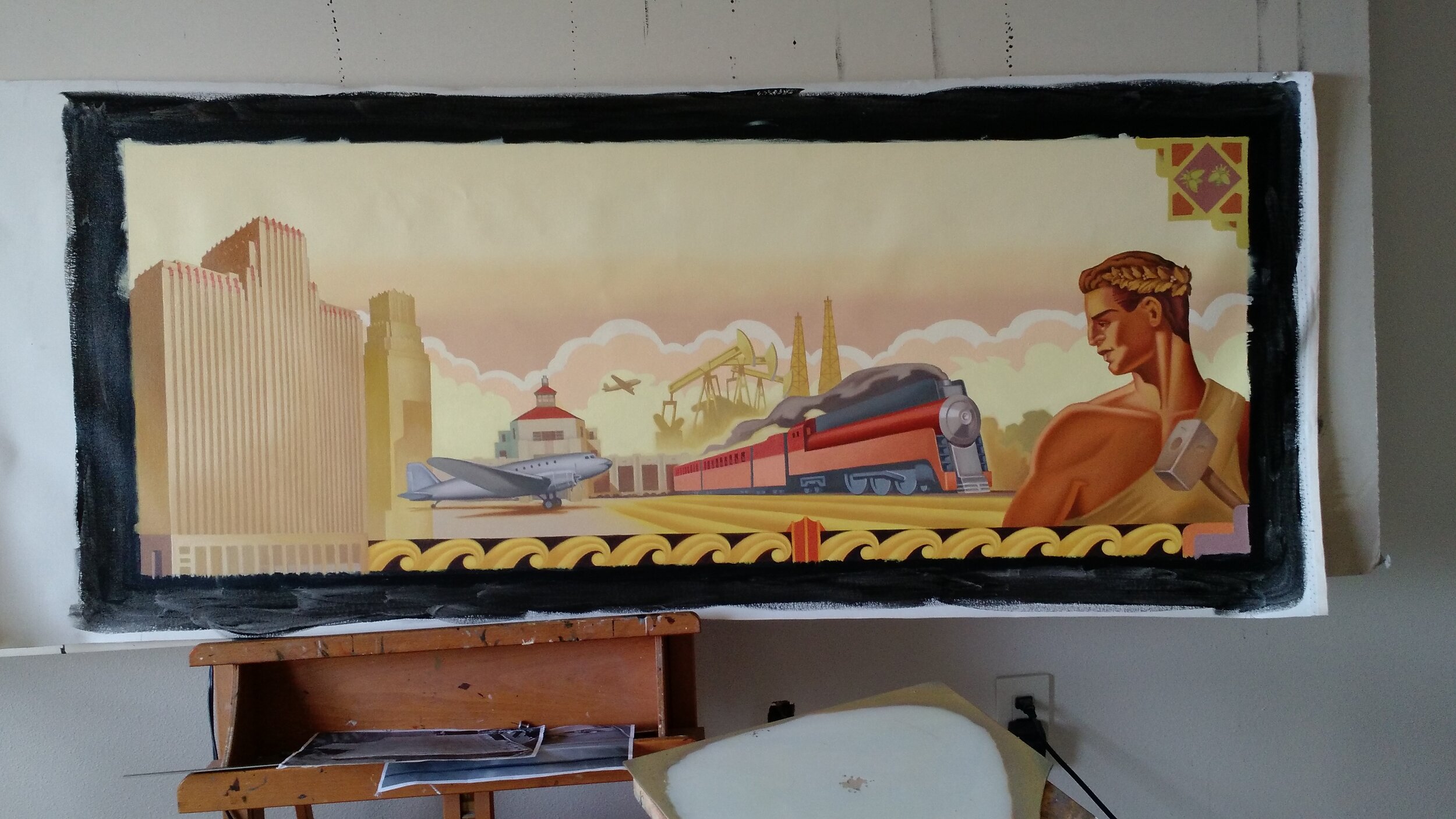In the center of downtown Houston, 1001 McKinney’s redesigned art deco inspired space leads tenants and visitors back to the golden age of the 1940’s.
Built 75 years ago by the distinguished American architect, Alfred Finn, 1001 McKinney made history as the fist post-WWII skyscraper built in the southwestern United States. The building was originally created for the City National Bank, and throughout the building you can still find pieces unchanged from the 1940’s.
The renovation brought back 1001 McKinney’s original 1947’s design with beautiful furniture and ornamental light fixtures. Immense detail in the wood paneling to the chandeliers, bring attention to the spectacular 10 feet tall by nearly 100 linear feet mural that span across the entire lobby.
Tim Huhn is the artist behind the grand mural. The piece tells the story of the building’s origins in the midst of Houston growing as a metropolitan city. The center piece, the main segment of the mural, depicts two mythological figures facing each other. The female figure represents Houston’s rural beauty and natural resources such as the bayou and Texas’ state flower, the bluebonnet. Huhn also painted a magnolia in the woman’s hair to represent the welcoming of the summer months, which is a symbol seen throughout Houston. The male figure on the right side of the building symbolize the industrialized driving force and expansion of Houston in the 1930’s. Oil pump jacks, airplanes, and the streamliner are shown moving into the future. The integrity of the working class to rebuild America is rendered through these elements. Bringing nature and industry together is the 1001 McKinney building standing tall in the center of Downtown with other iconic 1930’s and 1940’s Houston skyscrapers.


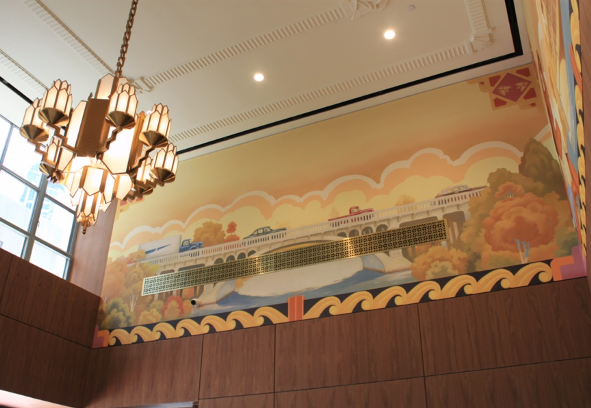
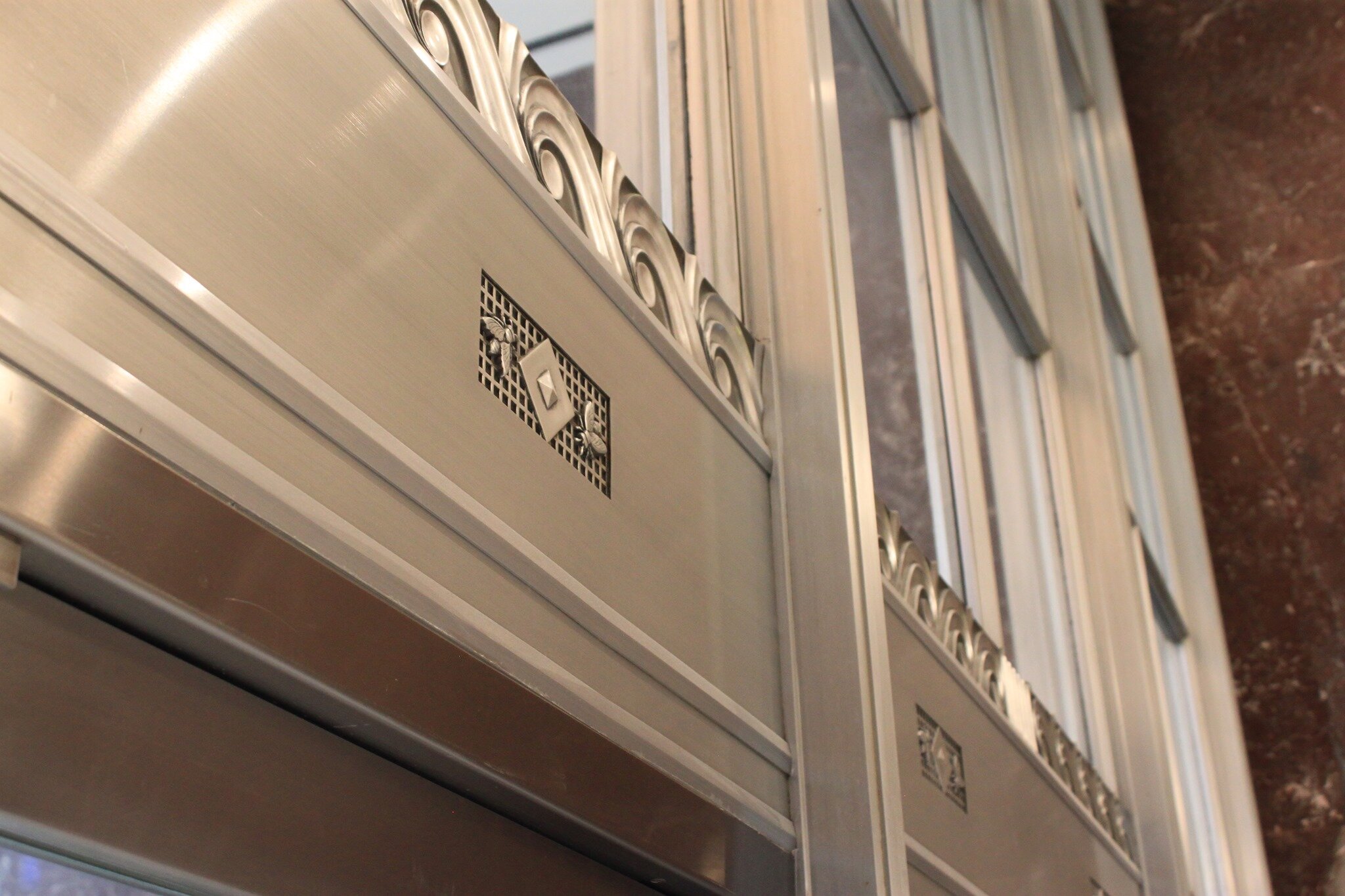
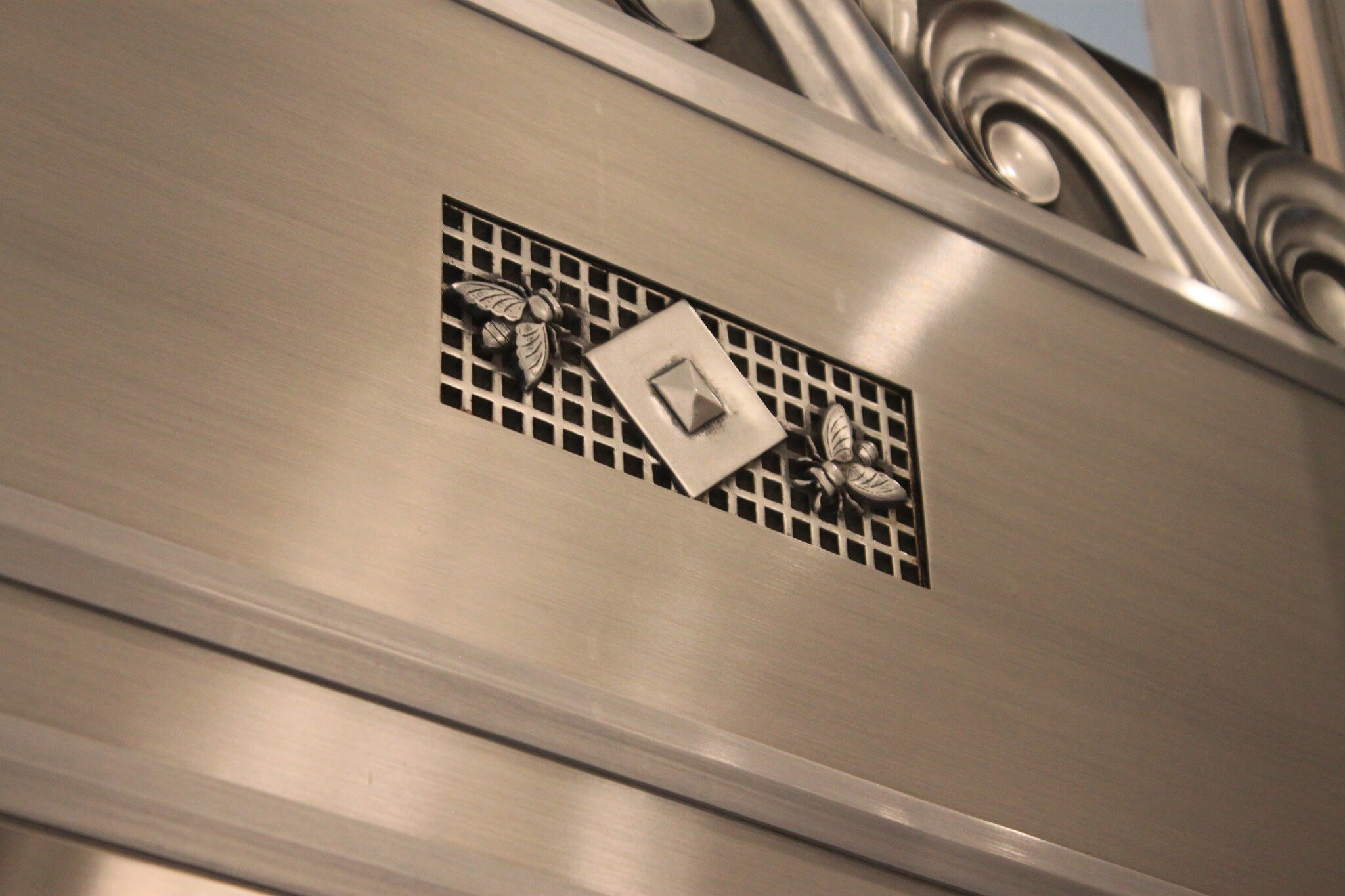
Tim Huhn also incorporated elements of the original 1947’s interior design in his mural to tie the main lobby paintings to the building itself. The detailed bottom boarder in the painting is inspired by architectural cornices from the exterior of the building and the corners of the mural are decorated with pairs of honeybees which are references to the air vent designs seen in the entrances of the building. Huhn’s main goal in creating this mural was to capture the enthusiasm and vigor of the beginning of a new age in American history.
Process Work
Tim Huhn put three months of hard work into this mural. From pencil sketches to the first layer of paint, Huhn’s work in progress is another masterpiece of itself.


